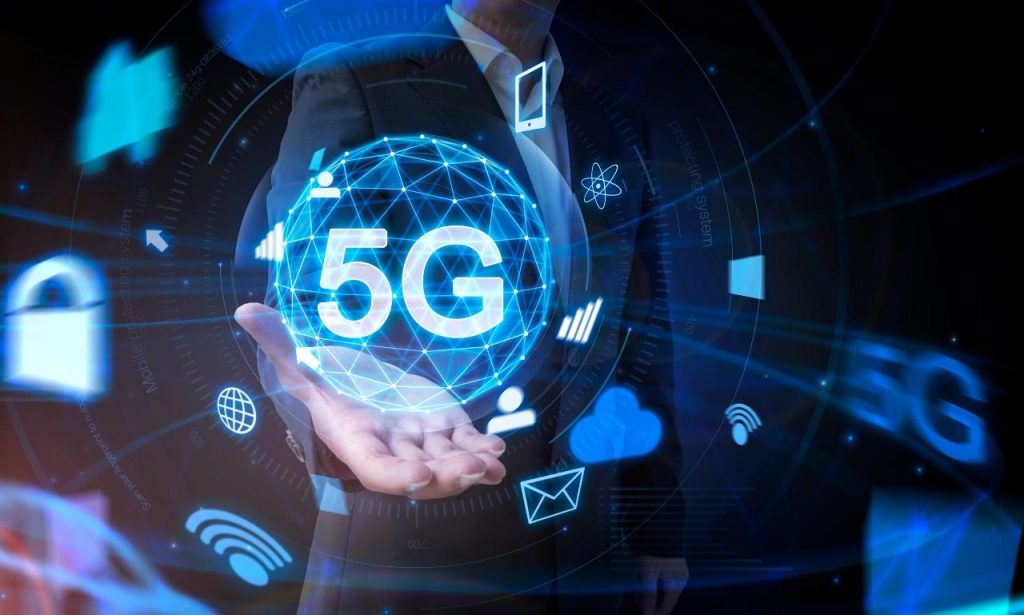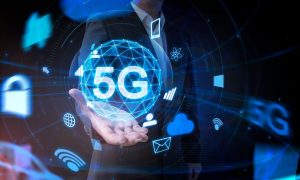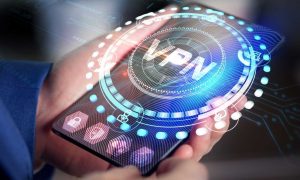Ever tried downloading a movie on 4G during peak hours? Frustrating, right? I’ve been there, too. The world stands on the brink of a wireless revolution with 5G technology. This next-generation network promises speeds that make our current connections look prehistoric. Yet some applications remain out of reach despite 5G’s impressive capabilities. The tech world buzzes with excitement about possibilities that might still be years away. Some proposed applications demand even more advanced infrastructure than what 5G currently offers. The gap between hype and reality creates confusion for consumers and businesses alike. Today, I’ll explain which cutting-edge applications might need to wait longer.
My team recently tested some early 5G networks. We found impressive speeds but inconsistent coverage. These limitations impact the applications that can realistically function on today’s networks. Understanding these constraints helps set realistic expectations about 5G’s immediate impact.
How is 5G different from other wireless networks?

5G represents the fifth generation of cellular network technology. It builds upon previous generations while introducing revolutionary new capabilities. The most apparent difference appears in raw speed measurements. 5G networks can reach 10 Gbps under ideal conditions. This speed eclipses 4G’s typical 100 Mbps maximum by a hundred-fold margin.
Latency marks another crucial advancement in the 5G landscape. Current networks typically operate with 50-100 milliseconds of delay. 5G aims to reduce this to just 1 millisecond in perfect conditions. Such responsiveness enables applications requiring instant feedback and communication. The network can handle many more connected devices simultaneously than previous generations.
Connection density increases dramatically with 5G implementation. The technology supports up to one million devices per square kilometer, enabling massive IoT deployments previously impossible on cellular networks. Bandwidth efficiency improves substantially through advanced spectrum utilization techniques.
Earlier generations primarily served mobile phones and limited data devices. 5G expands potential use cases dramatically across industries and applications. The architecture fundamentally differs from previous generations in significant ways.
How does 5G work?
New telecom specifications
5G operates across multiple frequency bands with distinct characteristics and capabilities. Low-band 5G uses frequencies below 1 GHz for wide coverage areas. Mid-band 5G utilizes 1-6 GHz frequencies, balancing coverage and speed. High-band 5G (millimeter wave) employs frequencies above 24 GHz for maximum speeds.
Massive MIMO (Multiple Input Multiple Output) technology enhances signal efficiency tremendously. Hundreds of antennas work together on a single tower for improved throughput. Beamforming focuses signals directly toward user devices rather than broadcasting widely. This precision increases speed while reducing interference between multiple connections.
Edge computing moves processing power closer to end users for reduced latency. Data gets processed near its source rather than traveling to distant data centers. New modulation schemes allow more data transmission in the same spectrum. The entire infrastructure operates with software-defined networking principles for flexibility.
I visited a new 5G installation last month in Silicon Valley. The equipment looked surprisingly compact despite its powerful capabilities. Engineers explained how these small cells would form the backbone of urban 5G coverage.
Independent virtual networks (network slicing)
Network slicing helps establish virtual networks operating on shared physical technological foundations. A single slice operates independently as its network, featuring distinct characteristics. The technology applies specific resources to match different application requirements. Each healthcare network slice requires reliability as its main priority, yet gaming networks need low latency performance.
The innovative method allows network customization, which was never attainable in wireless network systems. Network operators can provide exact performance standards for essential applications. Service level agreements become much more precise and meaningful. Resources adjust dynamically based on changing demands across different network slices.
The isolation between slices ensures security and performance guarantees remain intact. High-priority slices maintain operation even during network congestion. The approach maximizes the efficiency of the overall infrastructure through intelligent resource allocation. Different industries can receive precisely the network characteristics their applications require.
Private networks
Through 5G technology, organizations gain the ability to run their exclusive cellular network operations. The dedicated systems deliver network solutions that match business requirements. The manufacturing industry achieves highly dependable network connections to operate automated devices. Healthcare institutions deploy protected network systems for their critical operational data and essential healthcare systems.
Private 5G networks give businesses complete control over network security measures while ensuring top-level performance levels. Organizations’ network capacity remains separate from public user traffic throughout peak usage periods, making better signal coverage possible in difficult indoor locations. Every organization can create custom network configurations to support their proprietary software requirements.
The deployment expenses for cellular systems have dropped significantly since previous generations of cellular technology were introduced. Quick reconfiguration becomes possible through the software-defined characteristics. Businesses achieve better value through private 5G networks than by installing extensive wireless local area network (WLAN) infrastructure. The networks work without interruption with public 5G when devices shift between zones.
Real-life 5G use cases
Autonomous vehicles

Let me introduce autonomous vehicles as one application facing significant challenges. Self-driving cars require reliable, instant communication to operate safely. Current 5G deployments cannot yet guarantee consistent ultra-low latency everywhere. Vehicles need continuous coverage along entire routes without dead zones.
The massive data exchange between vehicles and infrastructure strains even 5G networks. A single autonomous vehicle generates up to 4TB of data daily. Processing this information requires both onboard systems and network communications. Safety-critical functions demand reliability beyond current 5G stability levels.
Vehicle-to-everything (V2X) communication remains partially implemented in most regions. The infrastructure investment for complete coverage extends beyond current deployment plans. Critical handoffs between network cells must happen seamlessly for moving vehicles. Autonomous vehicles might need dedicated network slices that are not yet widely available.
Smart factories
Smart factories represent another application waiting for more mature 5G capabilities. Manufacturing environments demand ultra-reliable connections for critical machinery. Current deployments cannot consistently guarantee the necessary reliability levels. Industrial applications require specialized network configurations that are still being developed.
Factory floors contain thousands of sensors generating continuous data streams. These environments often have challenging wireless conditions with interference sources. Mission-critical applications cannot tolerate the occasional service fluctuations in early 5G—the massive number of connected devices taxes network capacity in dense deployments.
Private 5G networks offer solutions, but implementation costs remain significant. Many manufacturing systems require extensive redesign to leverage 5G capabilities. Return on investment calculations still challenge many potential industrial users. Standards for industrial 5G applications continue evolving through real-world testing.
Enhanced Mobile Connectivity
Enhanced mobile connectivity represents the most immediate benefit of 5G technology. Smartphones experience dramatically faster download speeds exceeding 1 Gbps. Users notice significantly reduced buffering when streaming high-definition content. Video calls maintain higher quality even in challenging network conditions.
Mobile applications leverage increased bandwidth for more prosperous content delivery. Augmented reality features become more responsive and detailed. The improved capacity handles crowded areas like stadiums and conferences better—mobile gaming experiences lower latency for competitive multiplayer sessions.
The technology enables seamless streaming of 4K and even 8K video content. Cloud-based applications respond almost as quickly as local software. These enhancements build upon existing use cases rather than creating entirely new ones. Most current smartphones can immediately utilize these improvements without modification.
IoT and Smart Cities
Introducing the Internet of Things and smart cities as practical 5G applications. The network supports massive sensor deployments across urban environments. Traffic management systems collect real-time data from thousands of intersections. Utilities monitor infrastructure through widely distributed sensing devices.
Bright street lighting adjusts based on actual conditions and pedestrian presence. Waste management systems optimize collection routes using fill-level sensors. Environmental monitoring provides immediate alerts about air quality issues. Public transportation networks adjust schedules based on real-time demand patterns.
Security cameras utilize 5G for high-definition video transmission to monitoring centers. The network capacity handles these numerous connections without congestion issues. Early smart city deployments demonstrate significant operational cost savings. Citizens experience improved service delivery across multiple government functions.
Healthcare and Telemedicine

Healthcare applications leverage 5G’s reliability for critical patient services. Remote monitoring devices transmit patient data continuously to healthcare providers. Telemedicine consultations utilize high-definition video without connection issues. Doctors can access medical records and imaging instantly, regardless of location.
Rural areas gain access to specialist consultations that previously required travel. Ambulances transmit patient data to emergency rooms before arrival. Healthcare workers use augmented reality guidance during complex procedures. Remote patient monitoring expands beyond current capabilities with more sensors.
Some advanced applications, like remote surgery, remain on the horizon. Current implementations focus on enhancing existing healthcare delivery methods. The pandemic accelerated the adoption of many telemedicine approaches using 5G. Patient outcomes improve through faster access to appropriate care resources.
Conclusion
The 5G revolution creates transformative possibilities that enhance various business sectors and their technological applications. Modern technology delivers impressive functionality yet has not met all the initial expectations. Future-proof applications require standardized infrastructure work and further operational advancements for complete operational readiness. Smart cities, healthcare, mobile connectivity, and limited autonomous systems represent realistic current applications.
Network slicing and private 5G deployments offer immediate benefits for specific use cases. The technology continues to mature through real-world implementation and testing. Organizations should plan strategic 5G adoption based on actual capabilities rather than hype. The coming years will see rapid evolution addressing many current limitations.
The journey toward fully realized 5G capabilities continues steadily forward. Early adopters gain competitive advantages while helping shape future standards. The most fantastic applications may require patience, but the wait promises remarkable rewards. The foundation being built today enables tomorrow’s wireless revolution.
Also Read: 5 Best VPNs 2025
FAQs
5G offers speeds up to 100 times faster than 4G, with significantly lower latency and support for many more connected devices.
Wide coverage will take several years, with urban areas gaining access first and rural regions following gradually.
Yes, you need a 5G-compatible device to access these networks.
Scientific consensus indicates 5G operates well within established safety guidelines.
No, 5G will complement Wi-Fi rather than replace it, with each serving different connectivity needs.




